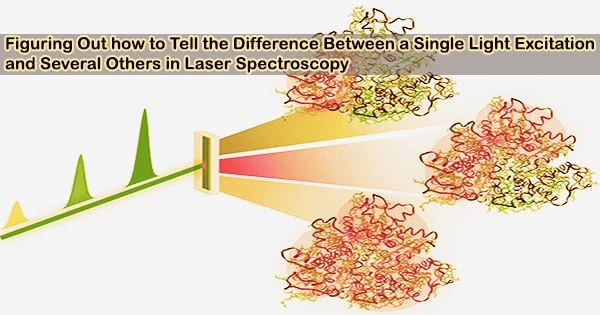The development of the first laser in 1960 ushered in the commercial use of light, which has since permeated every aspect of our daily life. The scientific subject of laser spectroscopy, which is essential for the examination of materials and fundamental physical phenomena, was simultaneously opened up by this discovery.
Despite all of the achievements, research teams have been battling the issue that a laser shining on a sample can excite it more than once in every experiment since the 1970s.
In this instance, it is challenging to comprehend the material since the measurement findings of the single excitation and the numerous excitations overlap and typically cannot be separated.
The laser power is typically decreased to address this problem in a way that makes multiple excitations less frequent than single excitations. They cannot be totally prevented, though, and may result in incorrect interpretations of the data.
It is challenging to discriminate between two, three, four, or even more excitations, even when numerous excitations are the focus of the inquiry.
Separation of signals from single and multiple excitations is particularly useful for large systems with densely packed light absorbers, such as natural photosynthetic complexes or organic materials.
Pavel Malý
A complex problem with a simple solution
A team of physicists and physical chemists from the Julius-Maximilians-Universität Würzburg (JMU) and the University of Ottawa (Canada) has now solved this decades-old problem. They present their method in the current issue of the journal Nature.
Tobias Brixner’s research team at Würzburg employed the well-known technique of “transient absorption” to monitor extremely quick changes in a variety of materials that happen in a millionth of a millionth of a second.
The researchers integrated the data using a newly developed formula while the conventional method only employs a single laser power. They were able to systematically divide the effects of single- to six-fold stimulation in this way.
“Not so long ago, I wouldn’t have thought that such a distinction was even possible,” Brixner says, “especially with such a simple procedure that any spectroscopic research group can implement and use without much additional effort.”
However, deriving the “recipe” was anything but simple and required in-depth analysis.
Theorist and collaborator Professor Jacob Krich of the University of Ottawa explains, “The interaction of light and matter is so rich, and we’ve demonstrated a beautiful structure hiding inside it. The fact that this method works for virtually any sample you want to study really surprised all of us.”
Applications from photosynthesis to materials science
The new method has a wide range of potential applications. First author Pavel Malý, who was a postdoctoral fellow with Brixner at the time of the study and is now a researcher at Charles University in Prague, explains, “Separation of signals from single and multiple excitations is particularly useful for large systems with densely packed light absorbers, such as natural photosynthetic complexes or organic materials.”
The method will be expanded in the future to, for instance, clarify energy transport in innovative photovoltaic materials, according to the authors.





